|
Summertime brings with it beach and pool time, picnics, vacations, and lazing in the hammock. Unfortunately, heat waves and unbearable humidity can also accompany the summer months. One often hears the phrase “dog days of summer.” The origin of this phrase is related to the stars, not dogs wilting in the summer heat! Sirius is the brightest star in the night sky and part of the constellation Canis Majoris—the “Greater Dog.” The ancient Romans and Greeks believed that when the Dog Star, Sirius, appeared in the sky and occupied the same region as the sun, it created the hottest days of the year. They also believed it brought bad luck, drought, and chaos. The Romans called it “dies caniculares” or “days of the dog star.” For the ancient Romans, the dog days of summer were believed to occur from approximately July 24 to around August 24. Over time, the constellations have drifted, and the “dog days” dates have changed. According to the Old Farmer’s Almanac, the Dog Days are considered to be between July 3 and August 11 in the Northern Hemisphere. However, it seems that these days, heat and humidity may linger for a bit longer, regardless of Sirius’s position in the sky. Although one might tend to prefer white or rosé wines as the temps begin to climb, red wines should not be overlooked during the summer months. Many light-bodied to full-bodied reds are ideal for sipping outdoors while enjoying grilled fare. For instance, unoaked or lightly oaked red wines tend to be lighter and fruitier. Slightly chilling many red wines for no more than 30 minutes can enhance the flavors, minimize the focus on alcohol, and make the wine more refreshing. When choosing a wine to drink while outside on a hot day, I recommend staying below 14% ABV. (alcohol by volume) Alcohol is a diuretic that contributes to dehydration. And when combined with outside heat, which leads to sweating, one can become dehydrated quickly. Therefore, it is essential to drink water and stay hydrated! Here are two white and two red Italian wines to enjoy this summer or any time of the year. The Whites Bolla Soave Classico DOC 2023 Founded in 1883, Bolla winery is situated in the countryside of Valpolicella and produces classic Venetian wines. This wine is 85% Garganega and 15% Trebbiano di Soave. Grapes are sourced and handpicked from 15-to 25-year-old vines in the Soave Classico hills, where the soil is of volcanic origin. After fermentation in stainless steel vats, the wine is left on the fine lees at a low temperature until it is ready for blending. Nose: White blossoms, apple, tropical fruit and citrus. Palate: A dry white wine with lots of character. Silky texture with pineapple, melon, honeysuckle, and lemon curd. Light and refreshing! Alcohol: 13% SRP: $9.99 Pairing suggestions: Enjoy as an aperitif or with seafood, light pasta, risotto, or salads. La Scolca Gavi Dei Gavi Gold Edition DOCG 2021 La Scolca is located in the prestigious terroir of Rovereto di Gavi in the Piedmont region. They have been producing wine for over 105 years and are in their fifth generation, where tradition is combined with modernity. 100% Cortese grapes are sourced from the Gavi hills in vineyards with vines up to 60 years of age. Fermentation takes place in stainless steel tanks and rests on the lees until bottling. Nose: White flowers, green apple, almonds, citrus and minerality. Palate: A dry, crisp wine with fresh acidity and balanced notes of flint, almonds, honeydew, and white fruit. A hint of citrus teases the palate on the finish. Alcohol: 12% SRP: $16 Pairing suggestions: Perfect as an aperitif or served with appetizers, fish, seafood, white meat, risotto, or Asian cuisine. The Reds Sensi Sabbiato Bolgheri Rosso DOC 2022 Sensi’s family history started in Chianti in 1890 and then expanded to other areas in Tuscany. Currently, the winery is managed by the fourth generation, which produced its first Bolgheri DOC wine in 2007. The grapes for this wine are a blend of 60% Cabernet Sauvignon and 40% Merlot, sourced from Bolgheri and Livorno in sandy, mineral-rich soils near the Tyrrhenian coast in Tuscany. After fermentation, the wine aged for 12-14 months in French oak barriques, approximately 50% of which were new wood. Further aging took place in bottles. Nose: Dark berries, baking spice, croissants, a touch of herbs and earthy. Palate: Aromas segued onto the palate with notes of plum, dark cherry, and pomegranate, balanced with acidity and salinity. Dark fruit lingers on a long finish. Alcohol: 14% I’ve included this wine despite its 14% alcohol volume. It is a great addition to enjoy with barbecue fare. But save it for a cool summer day or evening, not a heat wave! SRP: $18 Pairing suggestions: Enjoy with your favorite grilled meat, seafood, white meat, or pasta and sauce. Tenuta Regaleali Lamùri Nero D’Avola Sicilia DOC 2020 Tasca Conti D’Almerita boasts over 200 years of winemaking history in Sicily, dating back to 1830. It remains family-owned and run by the Tasca family. They have five estates throughout Sicily, with Tenuta Regaleali considered the “mother estate” comprising 550 hectares in the highlands of central Sicily. In the Sicilian dialect, Lamùri means ‘love’ and represents the Tasca’s love for their native Nero d’Avola grape variety, estate-grown at some of the highest points in Sicily. This wine is 100% Nero d’Avola. After fermentation, the wine was aged for 12 months in 20% new and 80% 2nd and 3rd-year French oak barrels. Nose: Floral, dark cherry, berries, baking spice, herbs, and a hint of flint. Palate: Aromas spill onto the palate with soft tannins, berries infused with balsamic, and a savory finish of spice and acidity. Alcohol: 13% SRP: $19.99 Pairing suggestions: Grilled meat, chicken, game, seared tuna, pasta and red sauce, or pizza, Please remember that alcohol, in combination with high temperatures, can dehydrate us quickly, so be smart. Drinking plenty of water is essential when outdoors in sweltering heat, especially if you plan to consume alcohol! Until next time…
Cheers! Penina To leave a comment or if you have an inquiry, please contact me at [email protected] As most of you know by now, I drink white and red wines all year long. My palate and mood dictate what I drink, not the seasons. However, with the warmer weather finally here, the lighter wines tend to take preference, but not always! Sipping Pinot Grigio is a treat that is savored throughout every season in my home. To quote me from an article written in 2022, “Many, many years ago, when my taste buds started developing a fine appreciation for wine, Pinot Grigio was not high on my list of enjoyable wines. I felt it lacked personality. It wasn’t until several later that I tasted Pinot Grigio from the northeastern region of Italy for the first time and had an “aha” moment. So this was how Pinot Grigio was supposed to taste! I was hooked!” Pinot Grigio, aka Pinot Gris, is a white wine grape that thrives in a cool climate. The color of the skin ranges from dark purple to pink to grayish. (grigio means gray in Italian.) It is a dry, easy-drinking wine that is clean, fresh, and aromatic. Flavors range from zesty and straightforward to complex. Typical flavor profiles of this wine include but are not limited to floral notes, green apple, lime, lemon, white stone fruit, pear, honeysuckle, bitter almond, bright acidity, and minerality. Due to Pinot Grigio’s racy acidity, it’s a versatile companion to a variety of dishes. From seafood, especially oily fish, to shellfish, white meat, light pasta, salads, and vegetable risotto, it pairs beautifully. Or, enjoy it as an aperitif! I was recently offered a few Pinot Grigio samples to review, to which I replied, “Yes, please!” So, let’s dive in! Trentino Ventessa Pinot Grigio Vigneti delle Dolomiti IGT 2023 This wine is produced by Mezzacorona, located in Trentino in the Italian Alps. The winery, surrounded by the Adige River, has been crafting estate-grown wines since 1904. Ventessa is made without chemical alteration. After the grapes are hand-harvested, they are immediately crushed and undergo a very short cold maceration in the press. The grapes are then softly pressed. The musts are then fermented for eight days. The wines are kept on the yeasts in steel tanks and are naturally low in calories and alcohol. Nose: White flowers, peach, and melon. Palate: White stone fruit, honeydew melon, citrus, and a touch of minerality balanced with crisp acidity. A light and refreshing sip! Alcohol: 9% SRP: $10.99 Pairing suggestions: Enjoy as an aperitif, or Mezzacorona suggests pairing with delicate finger foods, shellfish, medium-mature cheeses, and baked & fried fish dishes. Veneto Pasqua Black Label Pinot Grigio delle Venezie DOC 2023 My “love affair” with Pasqua Wines continues with this Pinot Grigio. Their expressive and memorable wines always please my palate. This family-run business was founded in 1925 and is located in Verona. It is led by third-generation Pasqua brothers Riccardo and Alessandro. The company has complete control over approximately 741 acres of vineyards (1/3 is estate-owned), stretching from Lake Garda to Soave. After the grapes are harvested, fermentation takes place in steel tanks. 30% of the wine ends alcoholic fermentation in French oak barrels and continues aging in Tonneaux of second use for about 3 months. I love the glass stopper! Nose: Beautiful floral notes with white stone fruit, pear, toast, and a trace of vanilla. Palate: Aromas segue onto the palate with nuanced notes of apricot, white peach, and tropical fruit. Toasty flavors and vanilla linger on the finish. It is complex, balanced, and very satisfying. Alcohol: 12% SRP: $14.99 Pairing suggestions: Pasqua suggests fish appetizers, shellfish, clams, fish-based first courses, white meats, and sushi. Friuli Venezia-Giulia Livio Felluga Pinot Grigio DOC 2023 Founded in 1956 by Livio Felluga, one of the most respected producers in Friuli, this 500-acre estate has 370 acres of wine vineyards in the Collio and Colli Orientali del Friuli. Livio is renowned for his dedication to reviving high-quality viticulture in Friuli. Livio’s son, Andrea Felluga, now continues the family legacy of producing wines of distinction. Grapes for this wine were hand-picked. After fermentation in steel vats, the wine was kept on the lees for a few months to increase its complexity, creamy texture, and suitability for aging. Once bottled, it matured in temperature-controlled rooms. Nose: A bouquet of white flowers, peach, pear, apricot, and lemon.
Palate: This wine dances with aromas that segue onto the palate. Minerality, crisp acidity, and a savory/salty dance add to this wine’s complexity. Lemon tarts and sweet apples linger on a long and fruity finish. Alcohol: 13.5% SRP: $35 Pairing suggestions: Livio Felluga noted that this wine pairs beautifully with fish, shellfish, risotto, and baked vegetables. Remember, Pinot Grigio is not just a summer indulgence; it’s a year-round delight. Its crisp, clean taste is a perfect match for any season, whether it’s a warm summer day or a cozy winter evening. So, next time you are offered a glass of Pinot Grigio from northeastern Italy, say, “Yes, please!” Until next time… Cheers! Penina To leave a comment or if you have an inquiry, please contact me at [email protected] The historic San Felice Wine Estate is located in the heart of Chianti Classico in the commune of Castelnuovo Berardenga in Tuscany, Italy. The estate covers an area of more than 650 hectares. There are 150 hectares of wine vineyards, 80% of which is devoted to Sangiovese, the heart of their production. Their presence extends to the prestigious terroirs of Montalcino and Bolgheri as well. San Felice has approximately 17,000 olive trees, experimental plantations, and a hotel complex. Known for its innovation and research to rejuvenate and preserve nearly extinct ancient Tuscan grape varieties, San Felice has launched its new Vitiarium Collection. Vitiarium is a botanical Latin word, when translated to English, means “a nursery for vines - a work in progress." To quote San Felice, “This new line marks the beginning of a fresh chapter in a legacy that continues to evolve, accelerating the trajectory of this true icon of Tuscan wine. This journey now takes on a new identity: Vitiarium, a name that speaks to deep roots—those reaching back to the early 1980s, when ancient native grape varieties, nearly lost to time, were rediscovered and revived. The idea of preserving a forgotten heritage gave rise to an experimental vineyard dedicated to safeguarding Tuscan viticultural biodiversity, from which this new line draws its name. The collection includes Borgo Chianti Classico DOCG, Pugnitello Toscana IGT, In Avane Toscana IGT (a white wine), and La Pieve Chianti Classico DOCG Gran Selezione—each an authentic expression of a land where tradition and innovation meet.” Over the past several years, I have tasted and reviewed a selection of San Felice wines from their three Tuscan estates. They are all noteworthy wines, as are the following four new labels from the Vitiarium Collection. In Avane Chardonnay Toscana IGT 2023 The name “In Avane” comes from “Avenal,” the Etruscan name of the area, which encloses a trace of the ancient culture present in the territory of San Felice. The grapes for this Chardonnay are hand-harvested from the San Felice vineyard and fermented mostly in stainless steel and partly in oak barrels. It is then bottle-aged for a few months. Nose: Beautiful floral and citrus aromas with a slight hint of vanilla. Palate: White peaches, fresh acidity, and a surprisingly long finish with citrus and melon teasing the palate. Alcohol: 12.5% SRP: $33 Pairing suggestions: Enjoy as an aperitif or serve with appetizers, salads, seafood, and grilled chicken. Borgo Chianti Classico DOCG 2022 San Felice said, “Chianti Classico with a character that embodies the soul of San Felice. Sangiovese and Pugnitello come together to create a fragrant and vibrant wine, a faithful and authentic representation of our distinctive terroir.” The blend is primarily Sangiovese with a bit of Pugnitello. Grapes were vinified separately in stainless steel for two weeks and then aged for about 12 months in large Slavonian oak barrels before bottling. Nose: Floral notes, fresh dark fruit, berries, baking spice, and a touch of earth. Palate: Aromas spill onto the palate with cherry and forest floor. Spice and earth linger on the finish. Balanced, smooth and juicy! Alcohol: 13.5% SRP: $33 Pairing suggestions: Grilled meat, seared tuna, mushroom risotto, pizza, or hearty soups and stews. La Pieve Chianti Classico Gran Selezione DOCG 2021 From San Felice, “La Pieve Gran Selezione expresses the essence of San Felice's Chianti Classico. The Sangiovese, harvested from the finest company vineyards and vinified with care, produces a wine that represents the highest expression of the terroir. This is in line with San Felice's production philosophy, which has always sought to interpret the land through native grape varieties.” The predominant grape for this wine is Sangiovese, along with other native grapes. Fermentation occurs in steel tanks for 22 days, then malolactic fermentation and aging in wood for 24 months. It is bottle-aged for eight months before release. Nose: Floral notes of violet, dense red fruit, dark cherry, baking spice, anise, and cherry tobacco. Palate: Well-structured and silky smooth with aromas segueing onto the palate with dark cherry, vanilla, and hints of licorice lingering on a long finish. Alcohol: 14% SRP: $50 Pairing suggestions: Enjoy with a charcuterie board, roasted meats, stews, game, and Pappardelle al Cinghiale. Pugnitello Toscana IGT 2021 From San Felice, “Pugnitello is an ancient Tuscan native grape variety, whose name (little fist) refers to the shape of its cluster. Following its rediscovery, it has been researched in collaboration with the universities of Florence and Pisa in San Felice’s experimental vineyard. This wine is the fruit of 20 years of study and experimentation focused on saving native Tuscan grapes from extinction. Pugnitello is noteworthy for its distinctive characteristics, smoothness, and full-bodied concentration.” This 100% Pugnitello was fermented on the skins for 20 to 25 days, followed by malolactic fermentation, and then aged for 18 to 20 months in French oak barriques, followed by eight months of bottle aging. Nose: Jammy-rich fruit and lots of baking spice, especially cinnamon and clove. Earthy with deeper notes of dark berries and plum.
Palate: Beautifully rich, fruity, and smooth, with a sweet and savory dance. Perfectly balanced and well-structured. Hints of cherry, plum, cocoa, cedar, and smokey notes do a sexy tango on the palate. Run, don’t walk to scoop this one up. Alcohol: 13.5% SRP: $69 Pairing suggestions: Roasted and seared meats, hearty stews, game, fowl, and mushroom risotto. With Memorial Day weekend in full swing, these wines will pair with beach sunsets, BBQs, outdoor and indoor dinners, or relaxing with a good book or movie. And, of course, they are perfect to sip all year long! Until next time, Cheers! Penina To leave a comment or if you have an inquiry, please contact me at [email protected] Spring is in full swing, with flowers blooming against a background of vibrant green foliage bursting from trees. Birds are nesting, and butterflies are reaping the benefits of sweet floral nectar. It is the season of renewal and the promise of new beginnings. With warmer weather upon us, I believe we are all ready to embrace the outdoors. I certainly am! As most of my readers know, what type of wine I drink is not dictated by the weather, but what my palate is in the mood for. Billy Joel’s lyrics from the song “Scenes From An Italian Restaurant” ring true for me. “A bottle of white, a bottle of red Perhaps a bottle of rose instead” “A bottle of red, a bottle of white It all depends upon your appetite” So, with that in mind, here is a sampling of four wines I received, which will please your palate and pair well with spring, and all year round! Domaine Bousquet Reserve Organic Chardonnay 2023 Domaine Bousquet is no stranger to my website. I have reviewed and thoroughly enjoyed all of their wines throughout the years. This family-owned estate is in the Gualtallary Valley, high up in the Tupungato district of the Uco Valley in Argentina’s Mendoza region. This 100% Chardonnay comes from certified organic estate fruit and is hand-harvested from low-yield vineyards located at the foot of the Andes at an elevation of 4000 plus feet. 50% of the wine is fermented in oak for 15 days, and the other 50% in tanks. The wine is aged for six months in 3rd use French oak barrels on the lees for a Burgundian style. Nose: Lovely floral and tropical notes, with apples, lime, freshly baked bread, and a hint of vanilla. Palate: Creamy mouth-feel with beautiful acidity, oak aromas transcend on the palate with pear and tropical notes of pineapple and pink grapefruit. Oak and acidity persist on a long and delicious finish. Alcohol: 13.5% SRP: $18 Pairing suggestions: Enjoy as an aperitif or with seafood, salads, cream-based pasta, mushroom risotto, or cheese. Herzog Lineage Pinot Noir Clarksburg 2023 Herzog Wine Cellars has a long family history of winemaking that spans nine generations. From Europe to New York to the vineyards of California, the Herzog family gave rise to the American kosher wine industry, including premium kosher winemaking in California. Today they have eight brands of wine, one of which is the Lineage brand. This 100% Pinot Noir is harvested from vineyards in Clarksburg, CA. Try as I might, I could not find any technical data or the aging process of this wine. Nose: Cherries, pomegranate, cocoa, and baking spice. Palate: Silky mouth-feel with cherries, strawberry, earthy, and a hint of baking spice lingering on the finish. Alcohol: 13% SRP: $20 Pairing suggestions: Roasted leg of lamb, duck with cherry glaze, grilled portobello burgers, or seared tuna. Attems Pinot Grigio Ramato Friuli DOC This wine is produced by Attems, a historic estate located in Friuli, in northeast Italy. In 2000, the estate was sold to the Marchese Vittorio Frescobaldi. Pinot Grigio, aka Pinot Gris, is a white wine grape that thrives in a cool climate. The vineyards for this grape are situated in the middle area of the property, known as “manine” or “little hands” which is a primarily flat area set between Collio and Isonzo. This 100% Pinot Grigio gets its coppery/coral color from slight contact of about ten hours with the purple skins before pressing and fermenting. Following fermentation, the wine rested for four months on noble lees. Nose: White fruit, melon, cherry, citrus, and wildflowers. Palate: Crisp fruit with nice acidity, pink grapefruit, melon, cherry pie, and minerality lingering on the finish. I love the dance between tart and juicy. Alcohol: 12.5% SRP: $20 Pairing suggestions: Seafood, goat cheese wrapped in prosciutto, cream-based pasta, grilled veggies, or enjoy as an aperitif. Darom by Yatir Cabernet Sauvignon 2023 Yatir Winery, founded in 2000, is located at the southern tip of the Judean Hills, and built at the foot of the Israelite Tel Arad Fort (an archeological site) in the heart of the Negev desert. The vineyards of the Yatir Forest are just 10 minutes away. Vineyards are planted at an altitude of up to 900 meters above sea level and are dispersed throughout different locations in the forest, each with its own distinct feature. The dry desert climate and cool nights contribute to producing exceptional wine grapes. The grape blend for this wine is 85% Cabernet Sauvignon, 10% Petit Syrah, and 5% Shiraz. Grapes are hand-harvested; the wine is aged for eight months in small oak barrels. Nose: Dark fruit, cherry, baking spice, forest floor, and a hint of violet.
Palate: Rich and fruit-forward with lots of berries, cherry, spice, earthy, and slate. Alcohol: 13% SRP: $35 Pairing suggestions: Prime ribs, Mediterranean cuisine, risotto, and chocolate desserts. Whatever the season, occasion, or “just because” moment, these wines are price-approachable, and your palate will thank you! “A bottle of red, and a bottle of white Whatever kind of mood you're in tonight” Billy Joel Until next time… Cheers! Penina To leave a comment or if you have an inquiry, please contact me at [email protected] As the snow falls on this wintry day, my thoughts drift to the salty scent of the ocean, sand between my toes, and a glass of rosé in hand. Although I may not be able to indulge my yearnings for the seaside right now, a glass of wine is definitely within my reach! Here are a few expressive Italian wines that should be on your radar. They just might transport you to your place of bliss! The first two wines are samples I received recently. Tenuta Ammiraglia Alìe Toscana IGT 2021 This delicious rosé is produced by Marchesi dé Frescobaldi winery, which has numerous estates located throughout Tuscany. The grapes for this blend of Syrah and Vermentino are harvested from vineyards in the heart of the Maremma, on hills bordering the nearby Tyrrhenian coast, which boasts abundant sun and sea breezes. This wine is appropriately named after the Greek sea nymph goddess, Alie. After fermentation in steel tanks, the wine is aged for three months on fine lees. Nose: Lovely floral notes, citrus, wild strawberries, herbs, and a whiff of minerality. Palate: This wine is fresh, juicy, and crisp, with aromas segueing onto the palate and balancing well with sapidity. Pink grapefruit and herbs linger on a long finish. Alcohol: 12% SRP: $20.00 Jermann Pinot Grigio Ramât 2022 Friuli DOC Jermann was founded in 1881 by Anton Jermann, who moved from his native Austria to set up roots in Friuli. Since the 1970s, his great-grandson Silvio Jermann has carried on the tradition of wine-making and taken the company to worldwide recognition. This 100% Pinot Grigio is a white wine with a slightly copper hue due to a five-hour maceration on the skins before fermentation in stainless steel. The concept is to maximize aromas, not extract color. Aging is six months on lees, also done in stainless steel. Nose: White flowers, pear, apricot, apple, lemon zest, herbs Palate: Aromas spill onto the palate with fresh and vibrant notes. Sapidity and peaches linger on the finish. Alcohol: 13% SRP: $39.99 Pasqua “11 Minutes” Rosé Trevenezie IGT 2023 When I think of Italian rosé, this particular wine never disappoints. I always have a bottle of “11 Minutes” chilling in my refrigerator. And this is not my first review of it! This family-run business was founded in 1925. It is located in Verona, Italy, and is led by third-generation Pasqua brothers Riccardo and Alessandro. The company has complete control over approximately 741 acres of vineyards (1/3 is estate-owned), stretching from Lake Garda to Soave. “11 Minutes” is a unique blend of sustainably grown grapes sourced from Lake Garda. The blend is 50% Corvina, 25% Trebbiano di Lugana, 15% Syrah, and 10% Carménère. It is called “11 Minutes” because after the harvest, the grapes are gently pressed, and with only 11 minutes of skin contact, the most noteworthy qualities of the grapes are extracted, and the color is obtained. The bottle is an unusual and eye-catching oval shape, with an alluring photo of Lesbia seen through the front label. Nose: Tantalizing floral notes, red berries, citrus, and a hint of herbs.
Palate: This is a fresh and inviting rosé with wild strawberries, spice, vibrant acidity, and a touch of pink grapefruit on the finish. Alcohol: 12.5% SRP: $18.99 Pairing suggestions for the above wines: Enjoy as an aperitif or serve with grilled fish, seafood, risotto, or salads. The whimsical cookies in the photos were made by Bedford Village Pastry, located in the heart of Bedford Village, NY. Next time you are in the area, check out their tantalizing and creative desserts. Until next time… Cheers! Penina To leave a comment or if you have an inquiry, please contact me at [email protected] The Loire Valley wine region is the third-largest winemaking region in France, spanning over 170 picturesque miles. The vineyards are situated along the middle stretch of the Loire River (France’s longest river) in central France, which runs from east to west. Diversity in soil composition and climate along this stretch plays a vital role in the production and characteristics of the wine. There are over 4000 wineries and approximately 57,400 hectares of vineyards here. Loire Valley is also called the “Garden of France”. It is noted for its vineyards, floral gardens, fairytale castles, and historic towns. The Loire Valley is divided into five sub-regions, each with its characteristic grapes, appellations, and styles. There are 51 appellations of origin (AOP) and six protected geographical indications (IGP). Most of the wines produced here are pressed from a single varietal as opposed to most classic French wines that are blended. There are over 24 grape varieties in the Loire Valley, with the vast majority of production being white wine. The leading white varietals are Melon De Bourgogne, Chenin Blanc, and Sauvignon Blanc. The leading red varietals are Pinot Noir, Cabernet Franc, and Gamay. According to the Loire Wine Council (InterLoire), Loire Wines’ industry-leading efforts are being made toward environmental protection and sustainability. To quote: “2030 INDUSTRY PLAN: The Loire Wine Council, InterLoire, was the first to create a collective plan involving all wine industry players: the 2030 Industry Plan, outlining the future for the wine region, with a target of 100% of Loire Wines farms certified sustainable or organic by 2030. Today, 73% of wineries and 85% of surface areas are certified either organic or sustainable by High Environmental Value (HEV) or TerraVitis. AGROCLIMATIC ATLAS: Further, InterLoire worked with research and science teams to develop the Agroclimatic Atlas, an unprecedented educational tool designed to raise awareness of how climate change will impact the Loire region. The Agroclimatic Atlas shows projected changes in climatic and agroclimatic indicators specific to the emblematic grape varieties of the Loire region up to the year 2100. This tool highlights the vulnerability of vines to climate change and provides an opportunity for professionals to prepare for tomorrow’s climate while also encouraging action today.” Here is a selection of three Loire wines made by winemakers advocating sustainability. (samples) Domaine Vincent Carême Vouvray Le Clos AOC 2021 This winery is situated in the heart of Vouvray appellation, in the Touraine sub-region, and spans 37 acres. The estate, established in 1999, is owned by Vincent Carême and his wife, Tania. All of Domaine Vincent Carême’s wines have been certified organic since 2010. This wine is 100% Chenin Blanc. Grapes are sourced from 50-year-old vines grown in limestone, flint, and clay soil. The grapes are hand-harvested, and the wine is aged in oak barrels for 12 months. Nose: Bursting with notes of white flowers, honey, white stone fruit, and a touch of citrus. Palate: Apple, pear, racy acidity, notes of minerality, and honeysuckle. It is a bright and balanced wine with a hint of lemon zest on the finish. Alcohol: 13% SRP: $38 Pairing suggestions: Enjoy as an aperitif or with savory cheese, fish, and white meat. Domaines Landron la Louvetrie Muscadet Sevre-et-Maine Sur Lie AOP 2022 Domaines Landron is in La Haye Fouassière, in the Muscadet Sèvre et Maine appellation in the Pays Nantes sub-region in Loire Valley. Joseph Landron worked with his father for 12 years before continuing to work the estate on his own. All grapes are organically grown, and the wines are certified as both organic and biodynamic by Ecocert. This wine is 100% Melon De Bourgogne (Melon Blanc). Grapes are hand-harvested from blocks of 30 to 40-year-old vines and young vines under ten years. The soils in his vineyards range from clay, sandstone, and silica to gneiss and the unique metamorphic amphibolite.. This wine is aged on fine lees for six months in glass-tiled concrete vats without fining. Nose: White flowers, citrus, pear, apple, and minerality. Palate: This is a dry, savory, mineral-driven wine with crisp acidity. Notes of salinity mingle with green apple and pear. Refreshing! Alcohol: 12% SRP: $16 Pairing suggestions: Perfect for shellfish and oysters or any seafood. Roasted white meat, goat cheese, and sushi also pair well with this wine. Château de Plaisance Anjou ‘Sur la Butte’ 2021 Château de Plaisance is situated in the Anjou sub-region of the Loire Valley. Since 1995, their 25 hectares of vines have been certified organic, and in 2008, they transitioned to certified biodynamic practices. Vanessa Cherruau now owns the estate and continues the legacy that the Rochais family began. Her first vintage was 2019. The grapes for this wine are 70% Cabernet Sauvignon and 30% Cabernet Franc. Grapes are sourced from 35 year-old-vines located on Chaume hill with soil of schist, phtanite, and spilite. The wine is fermented and aged in concrete vats for 11 months. Nose: Vibrant aromas of red berries, violet, and sweet herbs.
Palate: Notes of dark berries, lively acidity, smooth tannins, herbs, and a pinch of minerality are a delight to sip. Alcohol: 13% SRP: $33 Pairing suggestions: Grilled tuna, roasts, hearty soups, and pizza. These wines will surely please your palate! Until next time… Cheers! Penina To leave a comment or if you have an inquiry, please contact me at [email protected] Halloween has come and gone, which for many, now signals the onset of holiday decorating, organizing festivities, and planning menus. Over this past week, I have begun receiving requests asking questions such as “What is a light red wine?” and “What goes best with a particular meal and/or dessert?” So, in keeping with the holiday “spirit,” I am re-posting an article I published two years ago that will hopefully guide you through this holiday season and beyond! What once seemed a simple task of putting together a traditional holiday menu has become more challenging these days, with dietary restrictions and food lifestyle choices to consider. Food allergies, vegetarian, vegan, gluten-free, and lactose-free diets must be taken into account, and juggling all these food requirements can quickly turn a holiday table into a smorgasbord. And adding wine pairings to accommodate all of this can be pretty daunting! So, here are a few wine varietals to consider that will pair well with a myriad of dishes and alleviate the pressure of buying every style of wine in the store! White Wines Look for white wines with higher acidity and lower alcohol. These wines will pair well with traditional fare that tends to be rich in fat and salt, and will also complement non-traditional cuisine, especially spicy food. The acidity will tone down the fat and salt, and the lower alcohol won’t compete with or distort the palate while enjoying spicy food. I recommend: Sauvignon Blanc is light and crisp, has high acidity, and is an excellent choice when serving a variety of food. Dry Riesling is another good choice. It is fruity, acidic, and crisp. Chenin Blanc (dry) is aromatic, with vibrant acidity and is slightly sweet. It pairs well with most food. Red Wines Red wines shouldn’t overpower a meal; they should enhance it. Light-bodied red wines that are fruit-forward, lower in alcohol, and not oaky will complement an extensive range of cuisine without dominating the flavors of most dishes. I recommend: Pinot Noir is very food-friendly, has bright acidity, is fruity, and is a favorite at holiday meals. French Gamay (Beaujolais) is light, dry, and fruit-forward. Red Zinfandel is fruit-forward and fuller-bodied than Pinot Noir but still light and can cut through spicy, sweet, and bitter flavors. Sparkling Wines Sparkling wines are festive but not only consumed on special occasions. When it comes to food pairing, these wines are so accommodating many consumers are opting for the bubbly at mealtime instead of still wines. They are easy to drink and pair well with just about everything! The best sparkling wines to pour for your holiday table should be dry or extra dry but not sweet. There are many options and styles available. Sparkling wines are made using either the traditional method, with the second fermentation taking place in the bottle, or the tank (Charmat) method, with the second fermentation occurring in a steel tank. Sparkling wines are produced worldwide and go by different names depending on country/region/appellation of origin. You won’t go wrong with any of these sparkling wines. Champagne and Crémant – France Sekt – Germany Cava – Spain Prosecco and Franciacorta – Italy Rosé Wines The expression “Rosé all day” is trending, and yes, this pink wine is popular and has its place at holiday time as an aperitif or with a meal. It is food-friendly and pairs well with many flavors, spices, and textures. Look for dry rosés that are fruity, crisp, and refreshing, such as Provencal rosé, or try dry rosés from Spain, Portugal, and the USA.
Happy pairing! Until next time… Cheers! Penina To leave a comment or if you have an inquiry, please contact me at [email protected] Since 1925, the Marenco family has been producing wine. It began with Michele Marenco, whose dream was to make wine from his vineyard in the heart of the Bagnario Valley, situated in Strevi, in southern Piedmont, and part of the Monferrato wine region in northwestern Italy. Michele’s son, Giuseppe Marenco, who understood the territory’s potential, followed in his father's footsteps and continued to make quality wine from indigenous grapes. He built the winery in 1956, located in Strevi, and acquired the best land he could find to grow grapes. Today, Giuseppe’s daughters, Michela with her husband Giovanni Costa, Patrizia (winemaker), and Doretta, carry on the family tradition with passion, enthusiasm, and dedication. They supervise and control every step of the production process, from grape to glass. The Marenco family presides over 160 acres of vineyards, focused on practicing sustainability while maintaining traditional growing systems in the vineyard and optimizing the quality of the grapes. In order to help maintain quality control, all grapes are harvested by hand. They grow Moscato, Barbera, Brochetto, and other indigenous grapes from Monferrato, with vineyards in Strevi, Cassine, and Fontanile Castel Boglione. I recently received a tasty selection of some of their still wines. Carialoso Monferrato Bianco DOC 2020 This wine is made with 100% Caricalasino, an ancient local variety that Patrizia Marenco rediscovered in the Strevi area and reproduced, beginning with 3,000 plants. Also known as white Barbera, the name Caricalasino means “load up the donkey” in Italian, and is a nod to the past when donkeys were the only means of transporting the grapes from hilly vineyards to the wineries. Usually blended with other grapes, Marenco was the first winery in Italy to produce a monovarietal wine. The first vintage was in 1996. “Carialoso” is the name of the grape in the Piemontese dialect. This wine was aged six months in stainless steel tanks and Oak barrels and then bottle-aged for three months prior to release. Nose: Beautiful aromas of white flowers, white stone fruit, herbs, citrus, and minerality. Palate: Fresh and inviting with vibrant acidity, sapidity, peach, apricot, and a hint of citrus, with zest and pepper on the finish. Alcohol: 12.5% SRP: $24.99 Pairing suggestions: Grilled white meat, seared tuna, porcini risotto or sip as an aperitif. Albarossa Piemonte DOC 2021 The Albarossa grape is a cross between Nebbiolo and Barbera, two main Piedmont grapes. Albarossa was developed in 1938 by Italian enologist Professor Giovanni Dalmasso. However, it wasn’t until 2001 that Albarossa was recognized as a quality grape of Piedmont, which can now be used in Monferrato Rosso DOC. This 100% Albarossa was harvested from the vineyard in the Strevi hills. After fermentation in stainless steel tanks, the wine is aged 18 months in large Oak barrels. It is then bottle-aged for six months before release. Nose: Violets, red fruit, baking spice, herbs, and cherry pie, Palate: Well structured, lively, and balanced with soft tannins and acidity. Lush notes of red fruit, plum, cherry, anise, and warm, spicy herbs and pepper. Alcohol: 14.5% SRP: $29.99 Pairing suggestions: Roasted or grilled red and white meats, stews, aged cheese, and charcuterie. Bassina Barbera D’Asti DOCG 2022 This wine takes its name from the Cascina Bassina, a farm in Fontanile (Asti). "Bassina.” short in Italian, was the nickname given to the lady who originally owned the Cascina. She understood the potential of Barbera in this area and began planting Barbera grapes on the best exposed sides of the hills. Barbera is the most widely planted grape in Piedmont. It is a juicy, fruit-forward wine. The grapes for this 100% Barbera were sourced from Bassina farm vineyard in Fontanile. After fermentation in stainless steel tanks, the wine was aged in concrete vats for nine months and then bottle-aged for three months. Nose: Floral, fresh red fruit, baking spice, and balsamic.
Palate: Aromas segue onto thepalate with bright, ripe berries, spice, sour cherry and a hint of dried plum. Alcohol: 14% SRP: $20.99 Pairing suggestions: Appetizers, pasta, grilled meat, chicken, and simple fish dishes. The logo of the ducks on the bottle label was inspired by the wild ducks that populate the lake on the Bassina Estate. Until next time… Cheers! Penina To leave a comment or if you have an inquiry, please contact me at [email protected] It never ceases to amaze me that I can visit countries worldwide and converse in real-time with friends and family or meet with wine producers through the wonders of technology. Not long ago, I traveled to northern Italy via a Zoom meeting with brothers Aldo and Paolo Rametta to learn about the Romagna wine region and their two estates and a tasting of several wines they produce. The slopes of Romagna nestled in the eastern part of the Emilia-Romagna wine region in northern Italy are a treasure trove waiting to be explored. Romagna is a buffered zone between the Apennine mountains and the Adriatic Sea and is known for its rich and fertile terroir. The Emilia-Romagna region, with its proximity to Tuscany, Lombardy, Veneto, and the Adriatic Sea has a rich history of wine production dating back to the seventh century BC and is considered among the older Italian wine regions. It’s capital is Bologna. Aldo and Paolo were born in Louisiana, and although they grew up in the United States and Switzerland, they spent most of their lives abroad. Their passion for the environment, traditional winemaking, and family roots and history led them to Romagna and the purchase of two very distinct wine estates. Their main goal is to produce “a gentle expression of high quality from single vineyards.” Poggio della Dogana is the first wine project begun by the Rametta brothers. They purchased the estate in 2017, located in Terra del Sole. It includes a vineyard that is more than twenty years old which was already in organic conversion at the time. The vineyards cover a total of 20 hectares on a hilly area between Castrocaro Terme and Brisighella, at an altitude between 180m and 300m, with different soil characteristics in each area. The focus of the estate is representative of the Romagna territory, which grows Sangiovese and Albana, a white grape. Aldo said, “Albana is a white wine but quite peculiar for a white variety. We joke that it is red wine dressed in white. Its thick skins release tannins and complexity.” Ronchi di Castelluccio is in Modigliana, in the heart of the Sangiovese di Romagna lands. The Rametta brothers acquired this historic estate in 2020. There are approximately 30 hectares, with vineyards at an altitude between 250 and 500 meters above sea level. Biodiversity and sustainability are practiced in the single vineyards. “The historic vines have been restored, no plant has been torn down and the old growing systems have been introduced.” Except for Sauvignon Blanc, all the crus are 100% Sangiovese grapes. Here are four wines we tasted together (samples I received prior to the meeting.) Ronchi di Castelluccio Sottovento di Castelluccio IGT 2021 Produced from a single vineyard, this 100% Sauvignon Blanc was hand-harvested at an altitude of 390 meters. Soil is marl and calcareous sandstone. Fermentation took place in stainless steel and the wine was aged nine months in wood and a minimum of nine months in bottle. Nose: White flowers, citrus, white stone fruit, saltiness. Palate: Aromas segue onto the palate with fresh and lively notes, and sapidity lingering on the finish. Alcohol: 13% SRP: $40 Poggio della Dogana Belladama Romagna DOCG Albana Secco 2022 This 100% organic Albana was hand-harvested from 20-year-old vineyards at 200m and 300m altitude. Fermentation took place in stainless steel vats, and was aged for ten months in concrete and a minimum of four months in bottle. The typical signature of this wine is its intense golden color, which becomes more intense as it ages. Nose: White flowers, citrus, peach, apricot, and herbs. Palate: Lively acidity, fresh, dry, good structure, and a touch of minerality. A trace of tropical fruit and citrus zest linger on the finish. Alcohol: 13.5% SRP: $30 Ronchi di Castelluccio Buco del Prete di Castellucio DOC Sangiovese Modigliana 2021 From the 300m alt. single vineyard of the same name, Buco del Prete, this 100% Sangiovese was hand-harvested and fermented in steel. Aging took place in large French oak barrels for 12 months and at least six months in bottle. This vineyard is the lowest altitude vineyard on the estate at Modigliana. Nose: Dark fruit, forest floor, baking spice, and a hint of lavender. Palate: Rich dark fruit, dark berries, black cherry, fennel, lively acidity, smooth tannins, and a touch of spice on a long finish. Alcohol: 13% SRP: $40 Ronchi di Castelluccio Ronco della Simia DOC Sangiovese Modigliana 2020 The grapes for this 100% Sangiovese were sourced from Modigliana, in a vineyard restored in 2019 that was originally planted in 1975. It is a single vineyard with the highest elevation for a Sangiovese vineyard. (370 meters alt) Fermentation took place in steel and small oak vats and then was aged for ten months in Allier, Vosges, low-toasted tonneaux, and barriques. It then remained in bottle for a minimum of 14 months. Nose: Violets, red fruit, earthy, and baking spice. Palate: Beautiful texture and mouthfeel. Sapidity is present. Juicy, meaty fruit, dark cherry, smooth tannins, sweet spice, and a long finish. Alcohol: 13.5 % SRP: $140 In addition to my palate being entertained, the Rametta brothers had lots of information and stories to share. Their passion, love, and respect for the environment and history were palpable. They have piqued my interest in visiting Romagna and immersing myself in the land, culture, and wine! “There is no future without respect for history: we will be brave and let ourselves be driven by dreams and emotions.” Aldo & Paolo Rametta Until next time…
Cheers! Penina To leave a comment or if you have an inquiry, please contact me at [email protected] What happens when you pair a Riesling with Kama pudding? The palate explodes with a profusion of flavors while reveling in a virtual trip to Germany, Estonia, France, the Netherlands, and Belgium! How is this possible, you might ask? Read on, dear friends, and find out! Thanks to chef Adriana Urbina’s delectable Estonian Kama pudding recipe and Ernst Loosen, a wine producer whose Riesling is featured in this article, the stage is set for a magical pairing. The Wine Ernst (Erni) Loosen is the owner and 5th generation of the Dr. Loosen estate, which has been in the same family for over 200 years. Erni is considered one of the most iconic and influential Riesling producers in the world today. Since taking ownership in 1988, the estate has grown substantially. The Dr. Loosen estate is located in the village of Bernkastel in the heart of the Mosel Valley in Germany. With vines that are up to 140 years old in his best sites, Erni has transformed the vineyards by restricting crop size, prohibiting chemical fertilization, demanding strict fruit selection, and gentle cellar practices. All of the estate’s ten major vineyards are designated as Grosse Lage (grand cru). The prevalent soil types here are blue slate, red slate, and red volcanic sandstone. Dr. Loosen Erdener Treppchen GG 2018 Due to the iron-infused, red slate soil in the Erdener Treppchen vineyard, these wines are muscular and complex, with an intense mineral finish. The vineyard is so steep that a long time ago, stone steps were built into the hillside to help workers reach the vines. This wine is kept on the full lees for one year before bottling, allowing for greater texture. Although this is a dry wine, the juiciness of Riesling comes through, delivering white peach, citrus, green apple, and lots of minerality and crisp acidity. Erni says, “Old vines, steep slopes, red slate soil combined with winemaking techniques from over 100 years ago help make this wine truly unique; racy and mineral, but still balanced with a juiciness that makes you want to have another glass.” And I couldn’t agree more! Alcohol: 12.5% SRP: $54 The Pudding Adriana Urbina is an acclaimed Venezuelan chef based in New York. Her background is in fine dining and farm-driven cuisine. This, combined with her knowledge in nutrition (she completed her studies in holistic nutrition and gut health at the Institute of Integrative Nutrition in New York City), is why Chef Adriana's cooking is focused on responsibly grown and sourced local produce. She is a three-time winner of Food Network’s “Chopped” and has worked in several Michelin-starred restaurants. Adriana recently shared one of her favorite recipes, Estonian Kama Pudding with dark Belgium Chocolate. The four ingredients were sent to me along with the recipe. Each carefully selected ingredient expresses the authenticity, quality, and sustainability of European produce. Kama flour from Estonia A versatile ingredient, Kama flour is typically made from a mixture of grains such as barley, rye, oats, and peas. The grains are roasted and ground into a fine powder, producing a nutty flavor and distinctive aroma. Miel de Provence PGI, Honey from France Ooh la la! You can taste the lavender in this delectable honey. There are also subtle notes of herbs and wildflowers. Beekeepers in Provence use traditional production methods specific to this region, which include strategically placing the beehives in areas with abundant wildflowers and herbs. Milk from the Netherlands Milk production in the Netherlands is a significant part of the country’s agricultural sector and cultural identity. Approximately 96% of the milk is delivered to dairy factories to be processed into products such as cheese, butter, and yogurt. Dark chocolate Organic, from Belgium. With a long history of chocolate-making dating back to the 19th century, Belgium is renowned for its high-quality chocolate. Dark chocolate marked with the EU Organic label is made using cocoa beans grown without synthetic pesticides or fertilizer. Adriana said, “I have an unwavering preference for Belgian chocolate due to its unparalleled richness and smoothness. Sourced from the finest cocoa beans and crafted with precision by Belgian chocolatiers, it lends an irresistible depth of flavor and luxurious texture to my desserts.” This decadent dessert is easy to make and worth the wait to chill properly (about two hours) in the refrigerator. The use of parfait glasses or small ramekins makes for a festive presentation. If you would like the recipe, please email me at [email protected] Although this dessert and the Riesling are delightful to enjoy on their own, together, they forge an unforgettable treat for the palate! The Riesling’s natural high acidity and essence integrate beautifully with the pudding’s distinctive flavors, culminating in a graceful dance for the palate!
Until next time… Cheers! Penina To leave a comment or if you have an inquiry, please contact me at [email protected] |
Categories
All
|









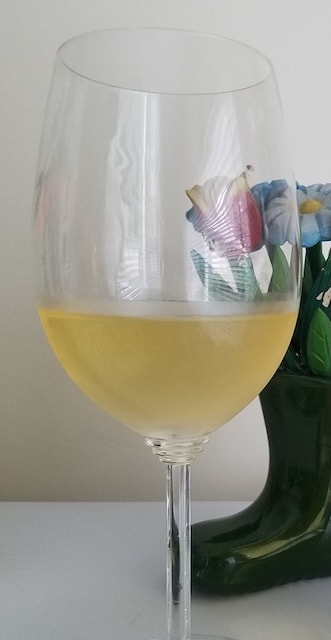
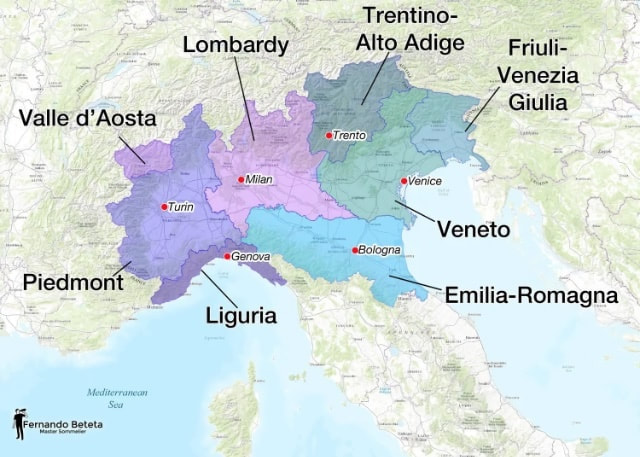
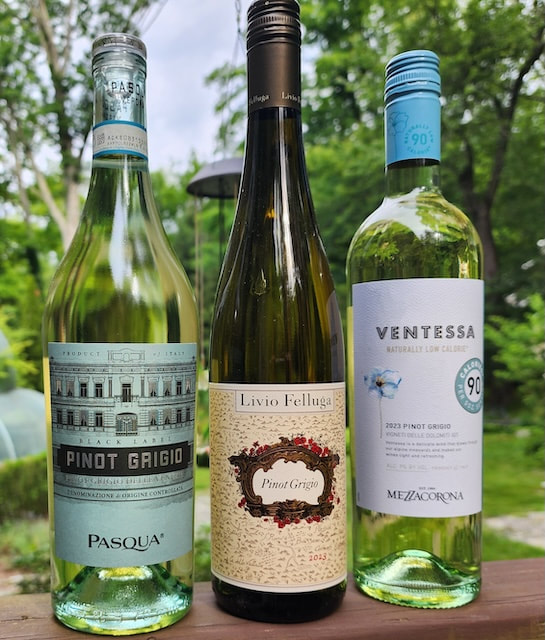
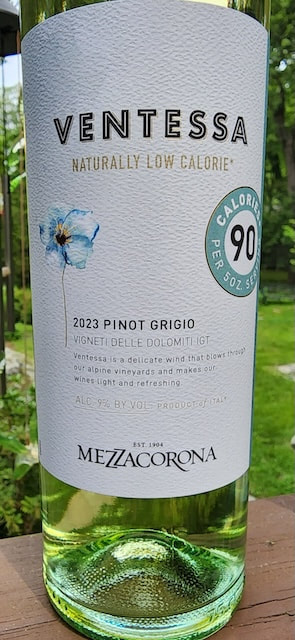
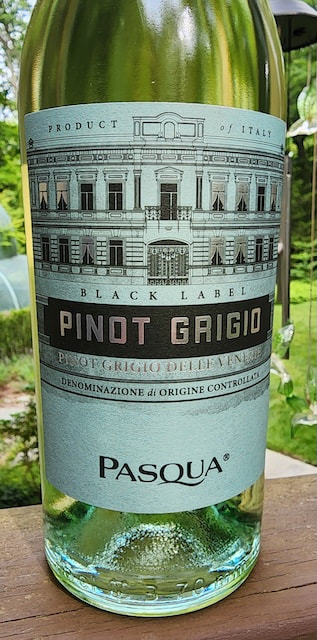
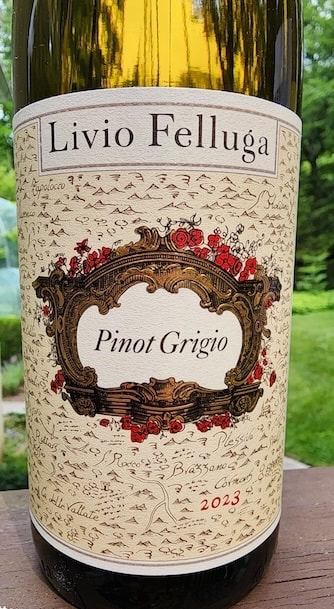
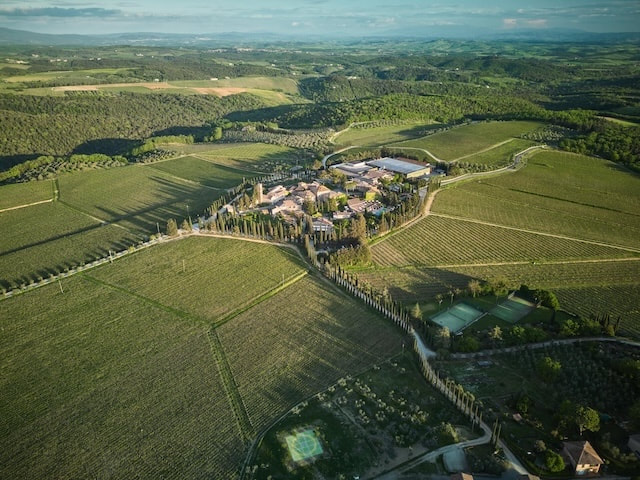

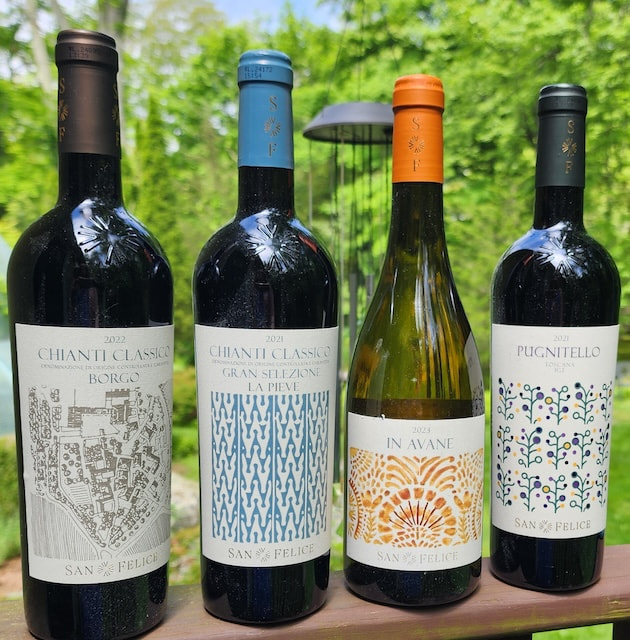
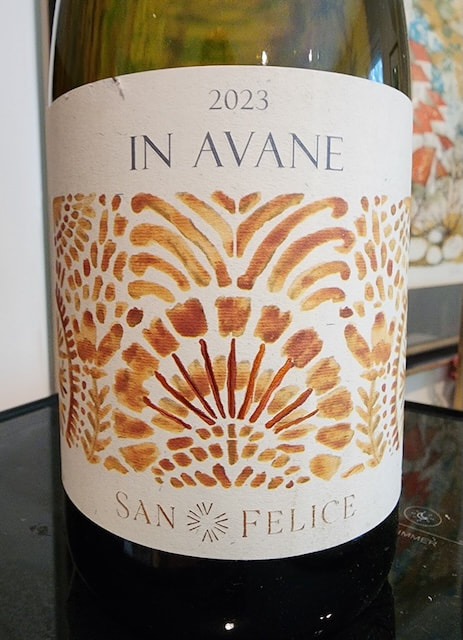
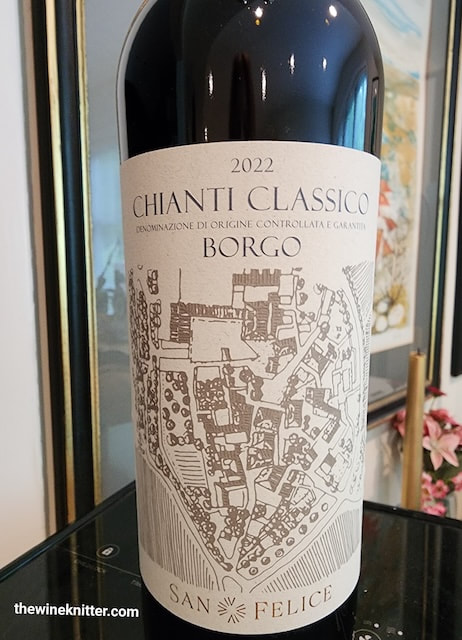
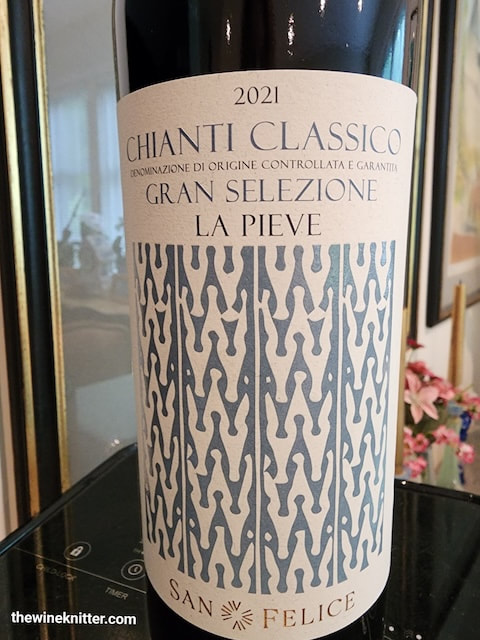
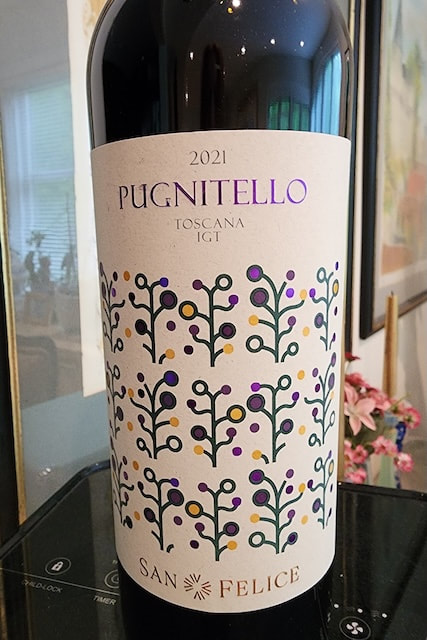
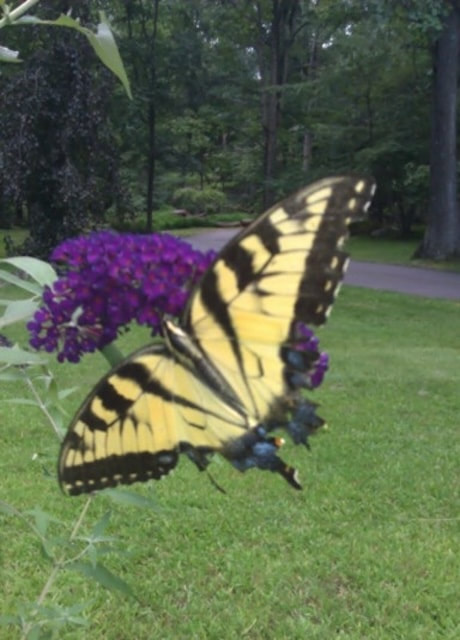
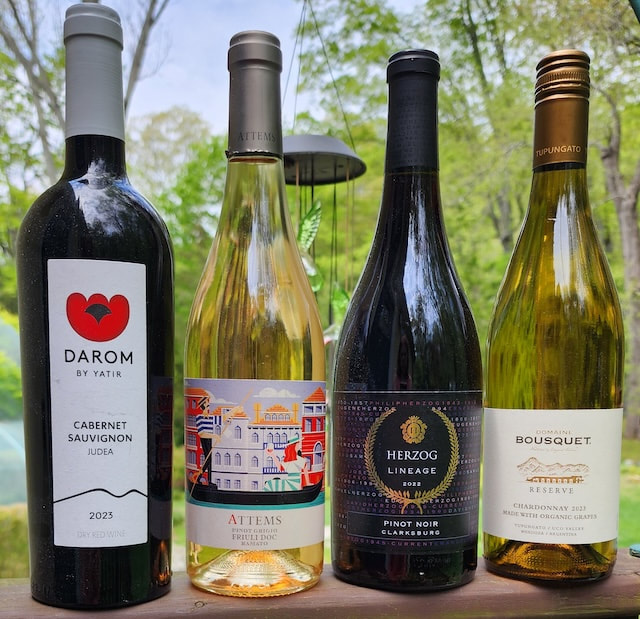
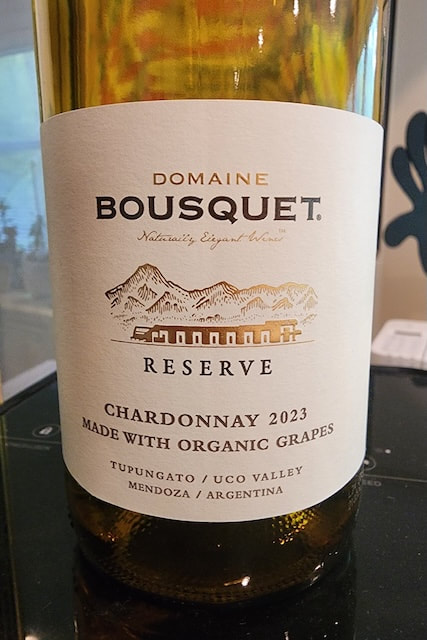
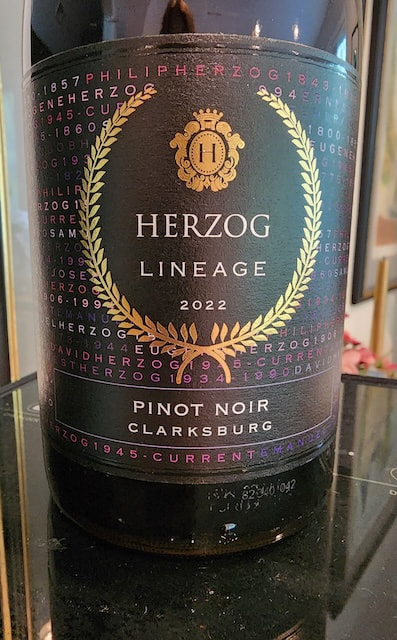
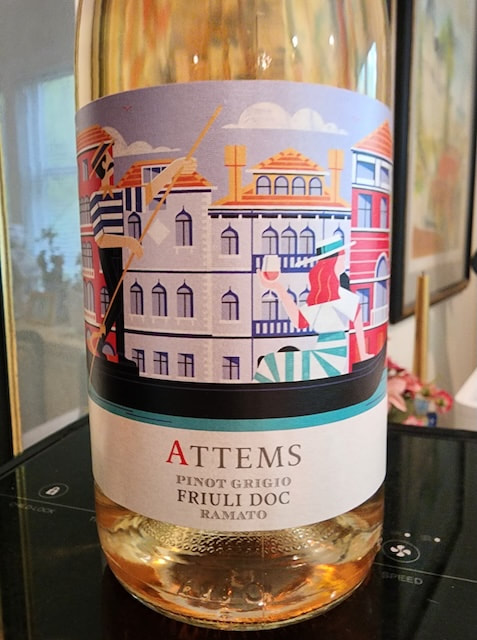
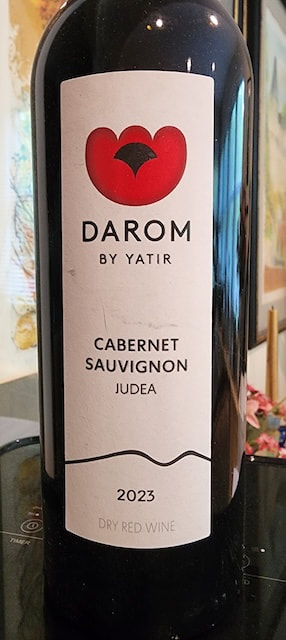
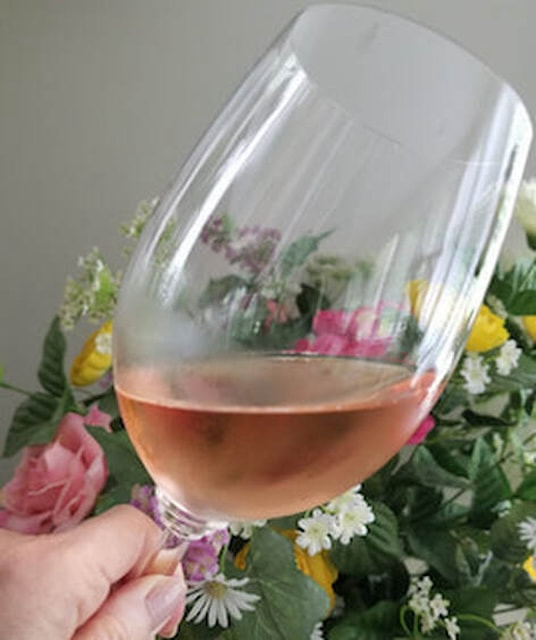
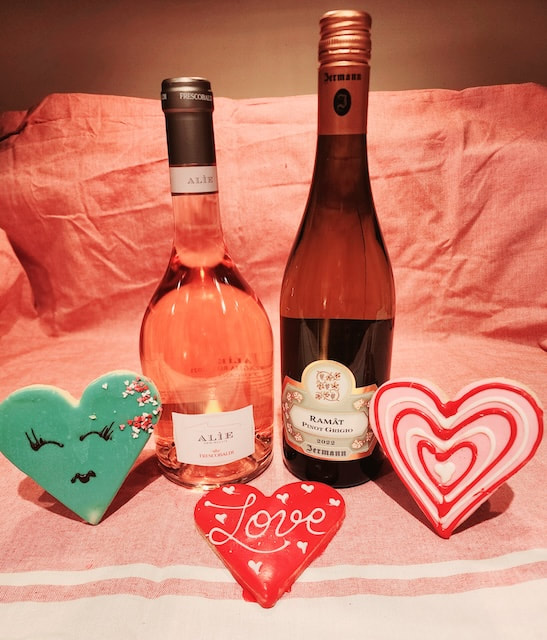
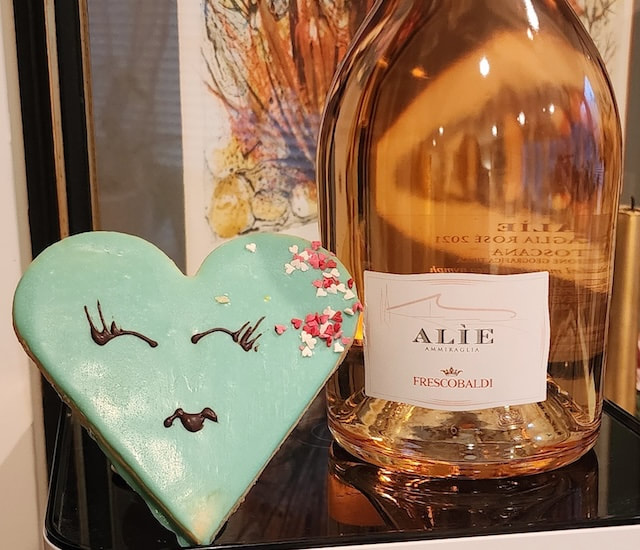
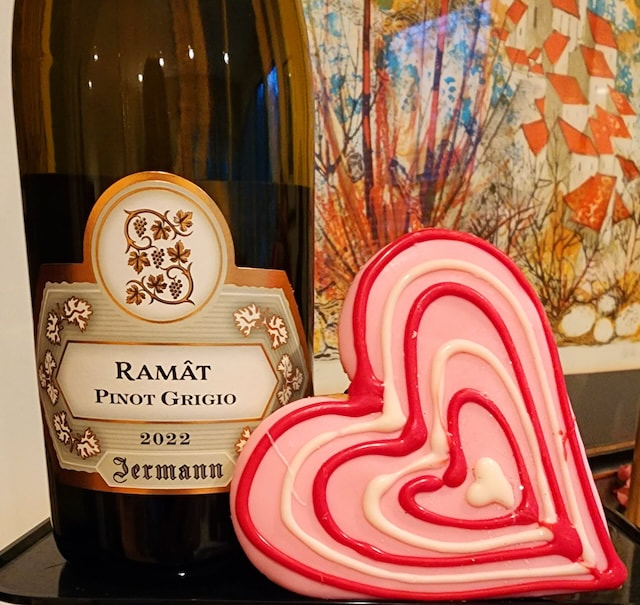
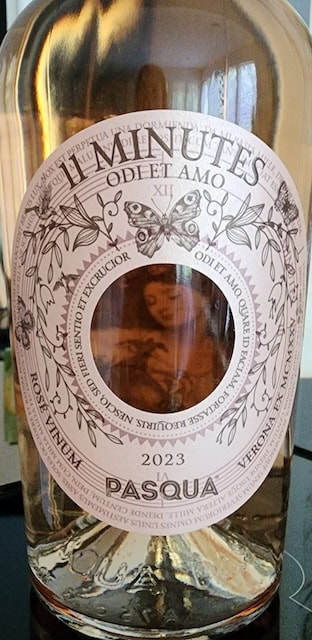
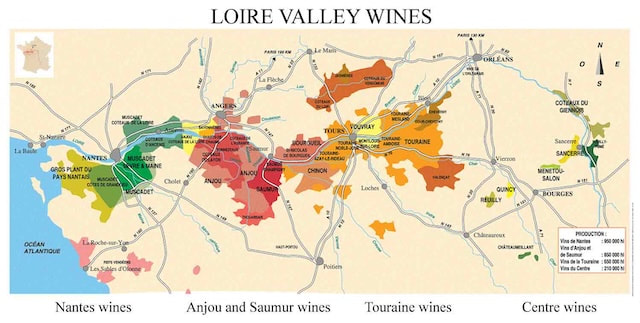
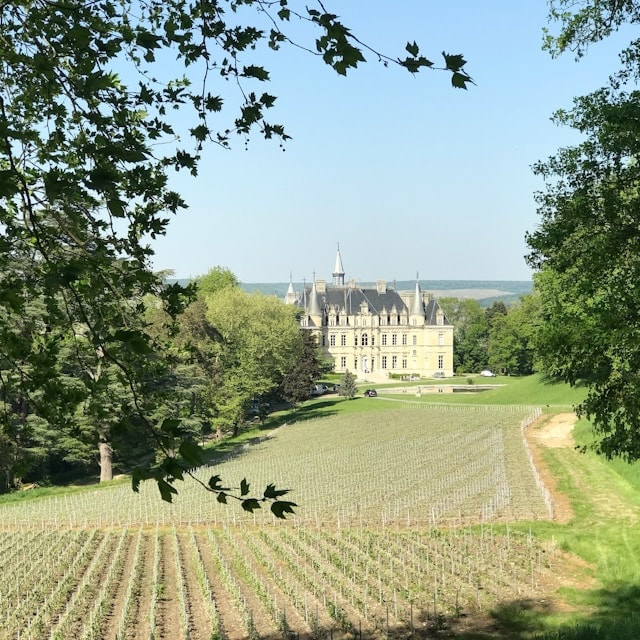
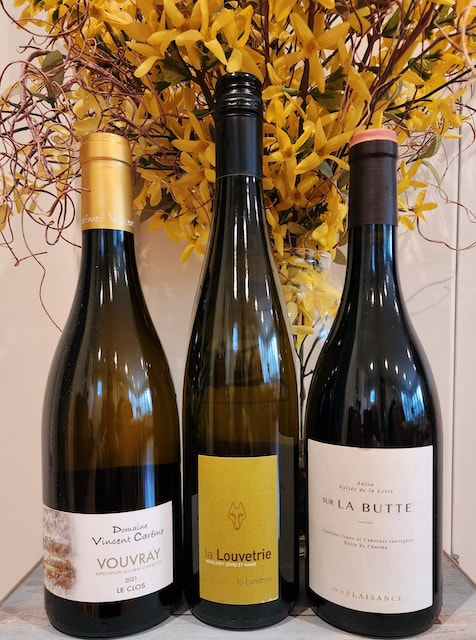
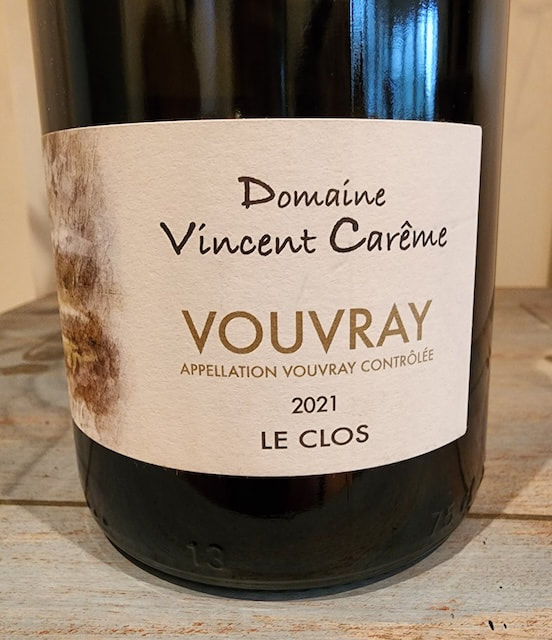
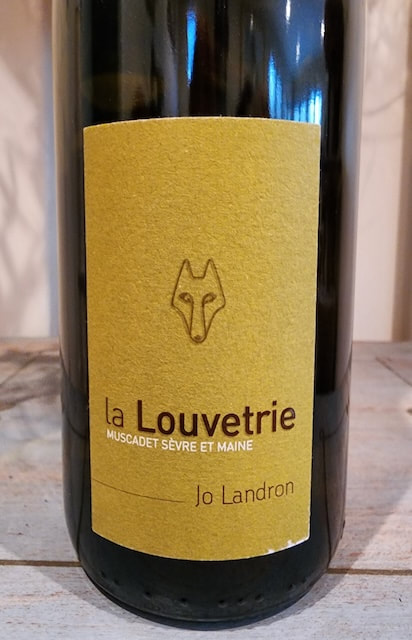
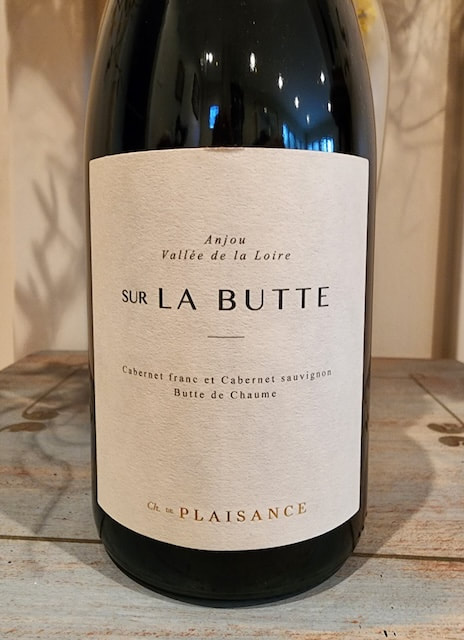
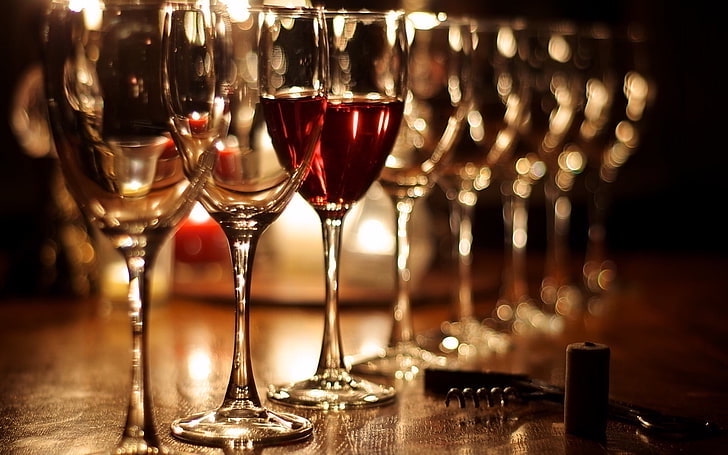
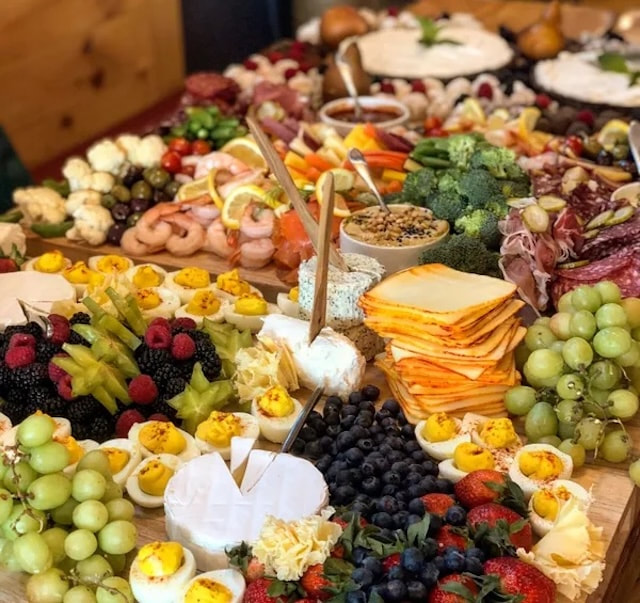
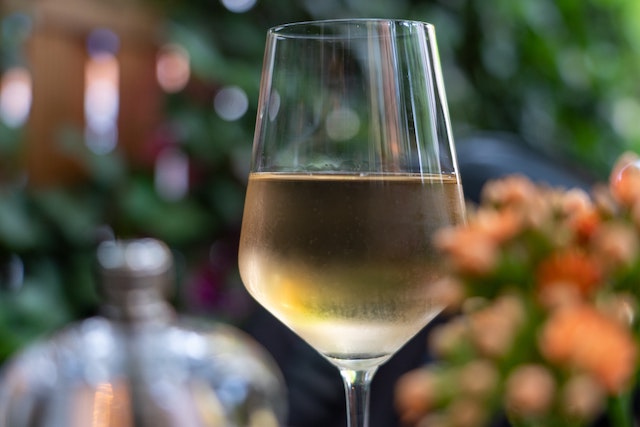
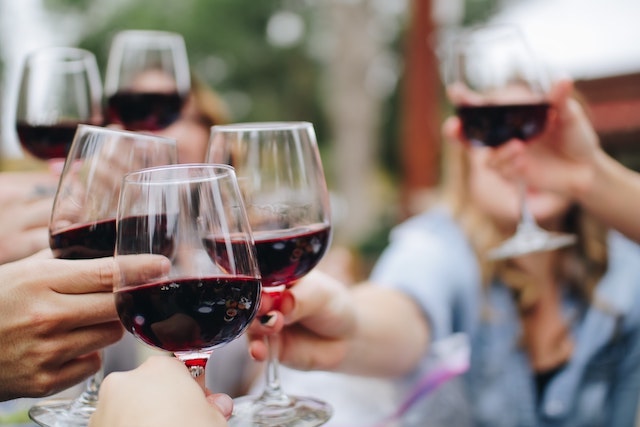

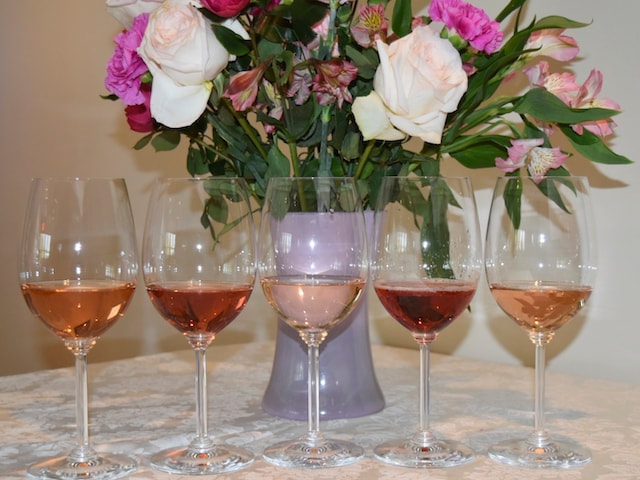







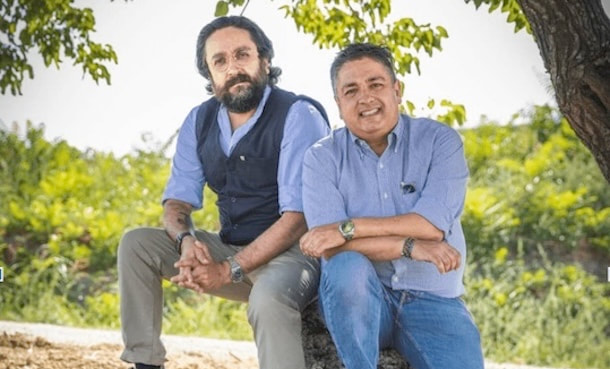
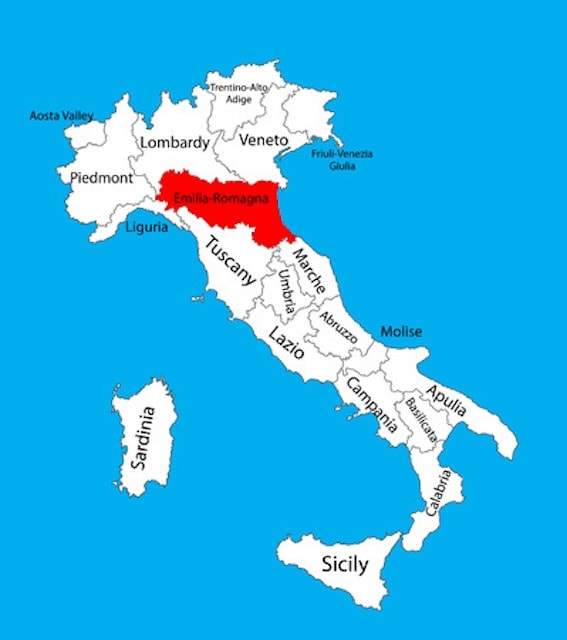
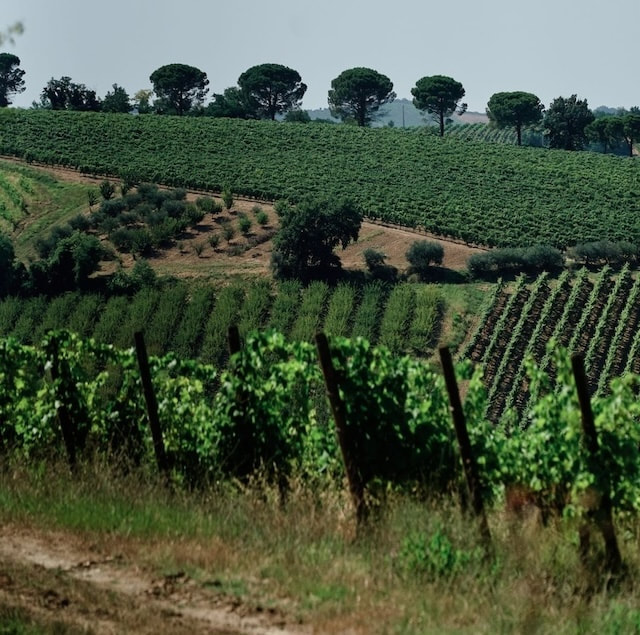
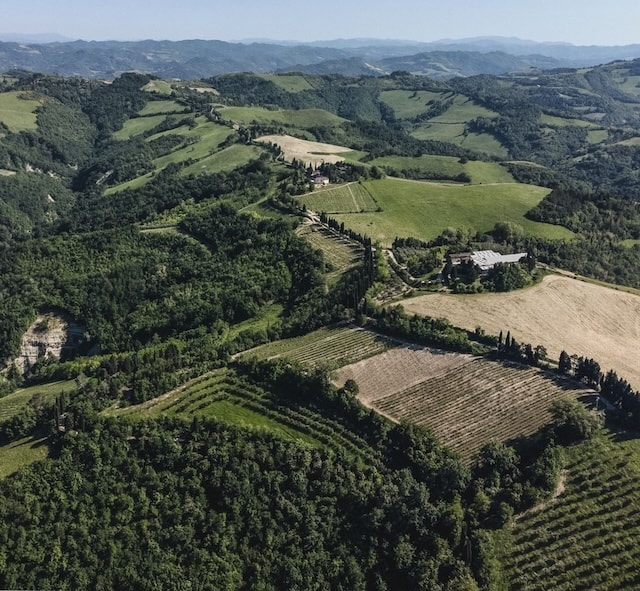
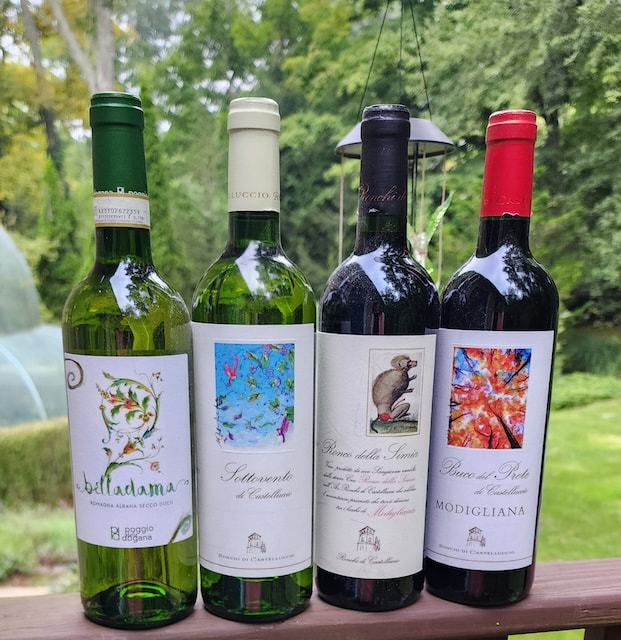
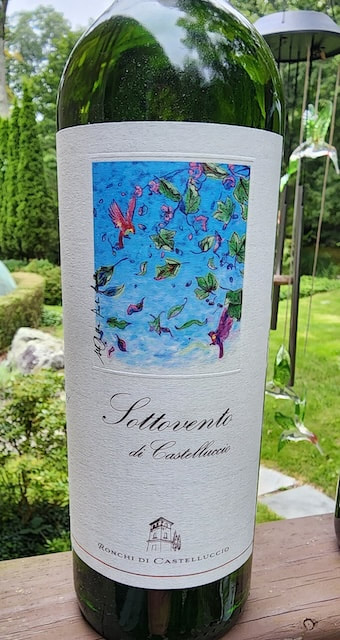
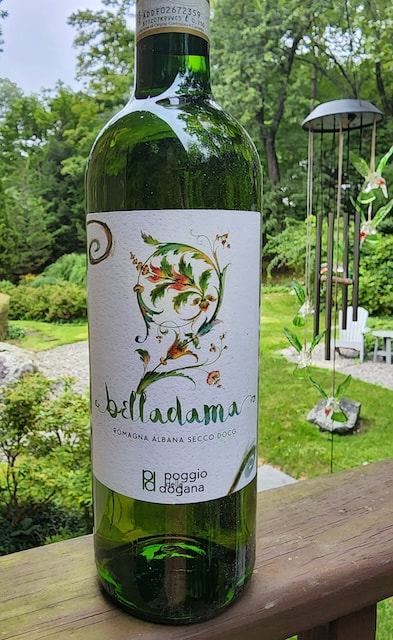
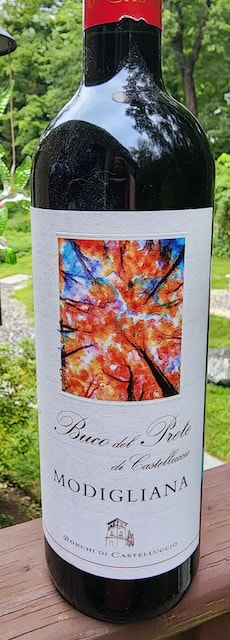
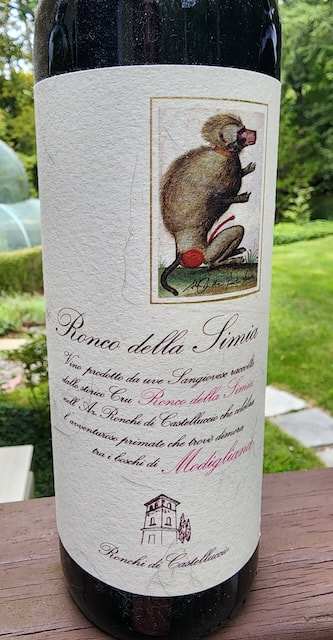
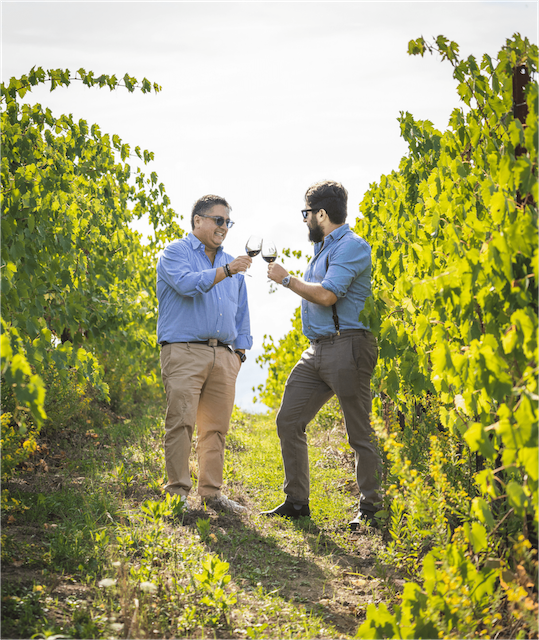
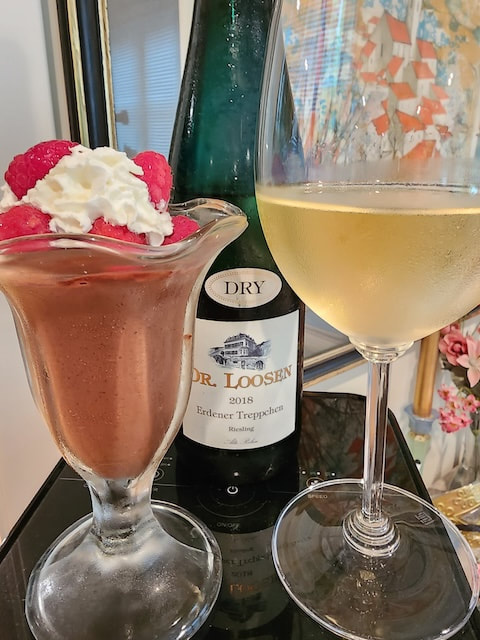
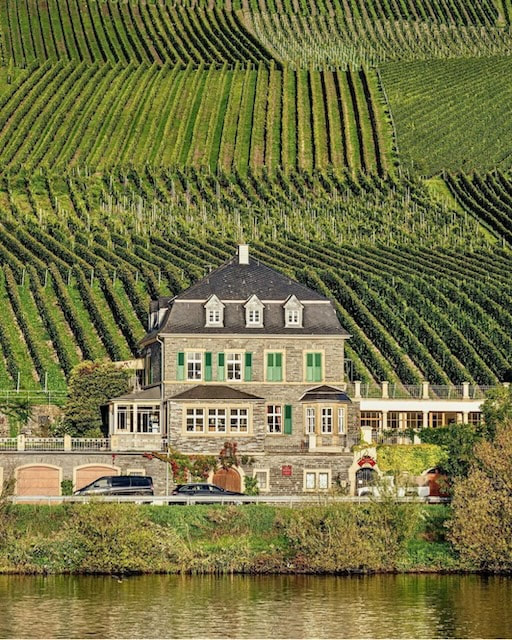
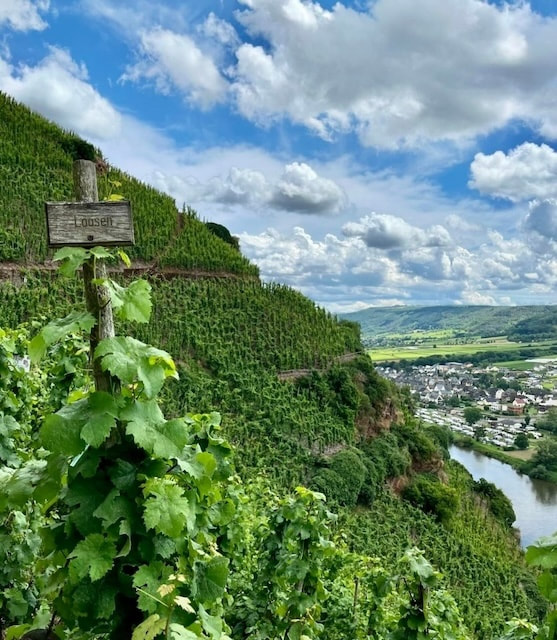

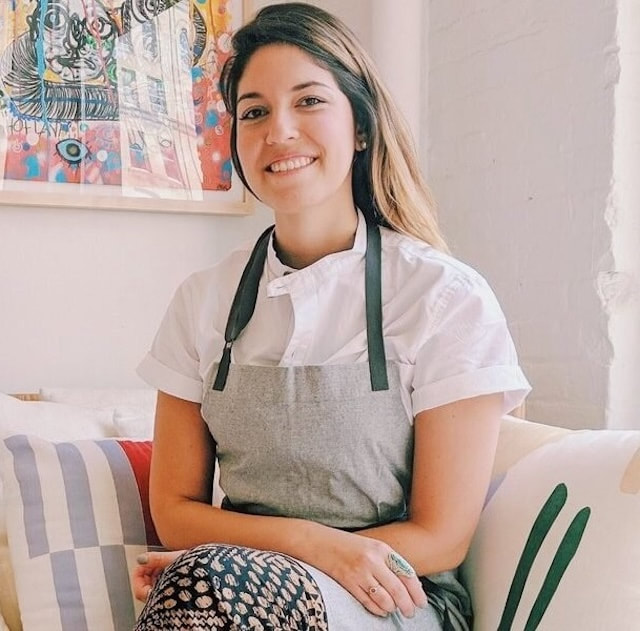
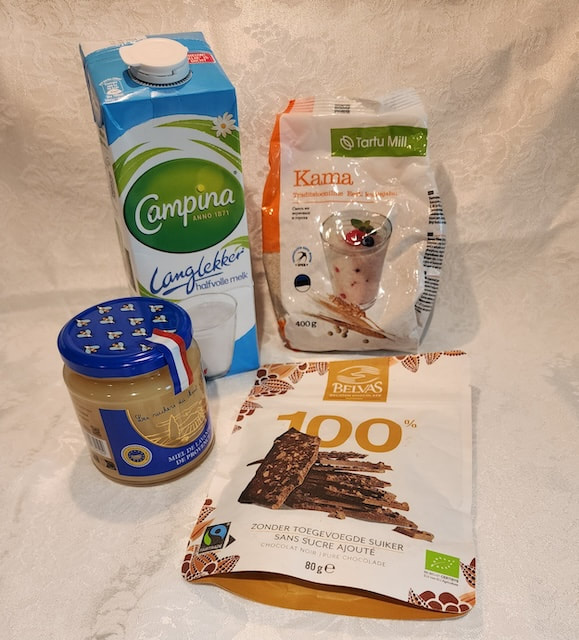
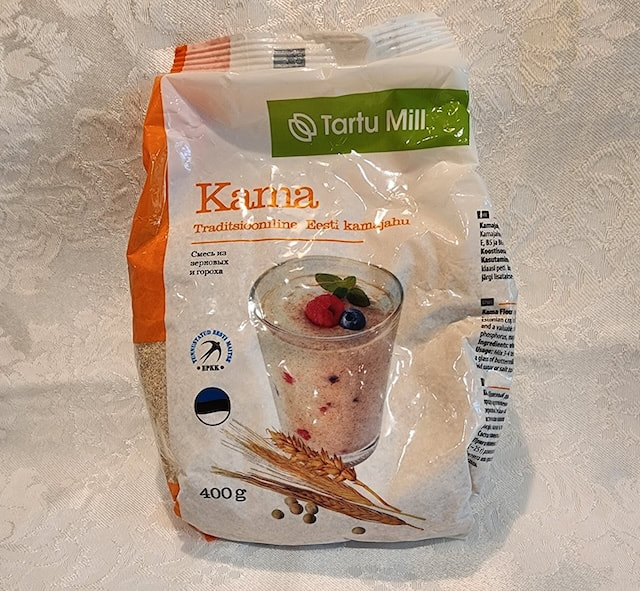
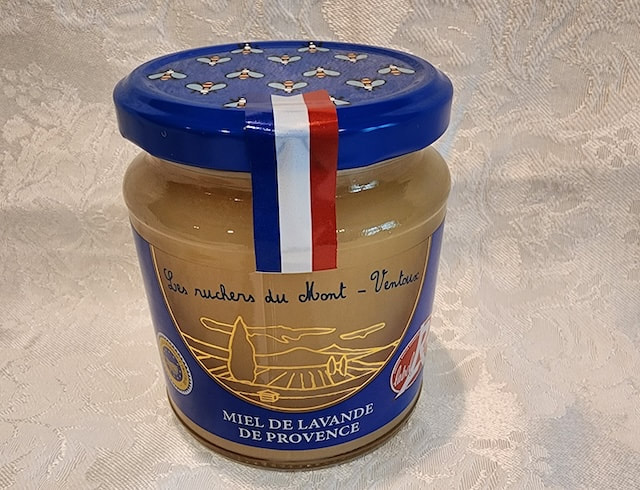
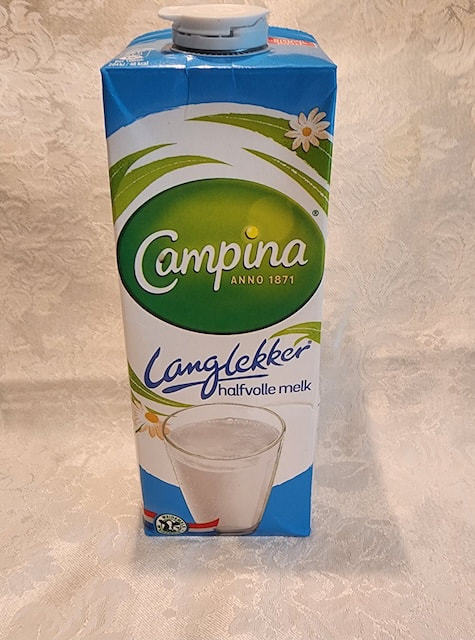
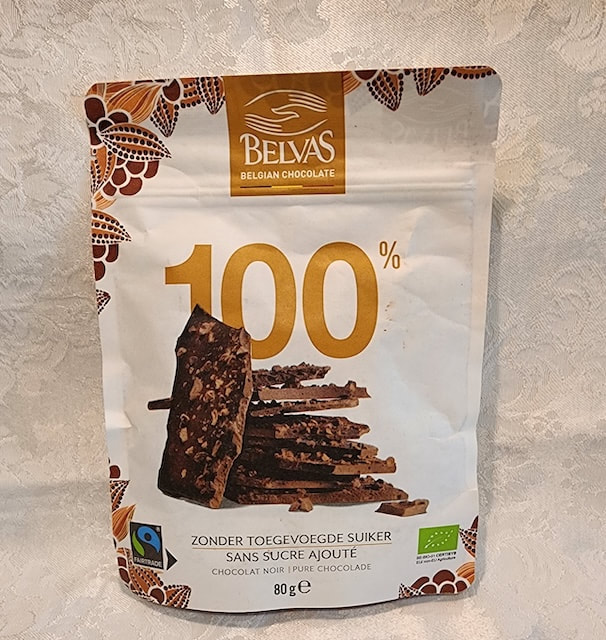
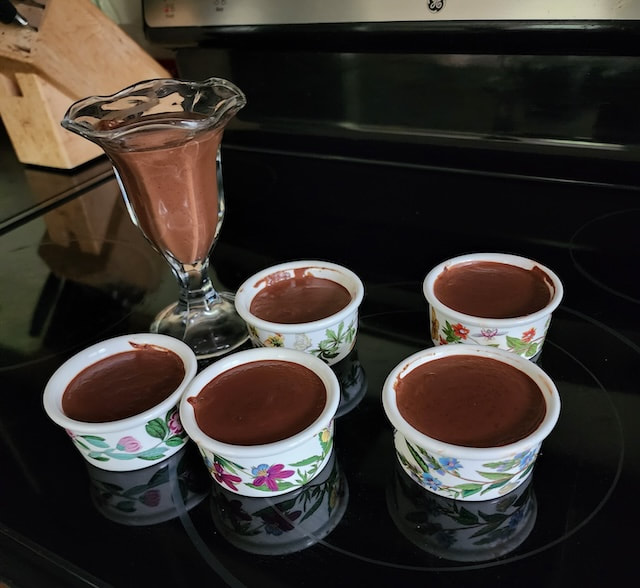
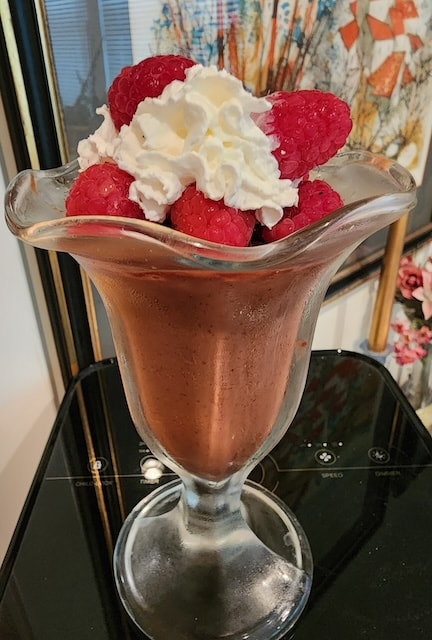
 RSS Feed
RSS Feed